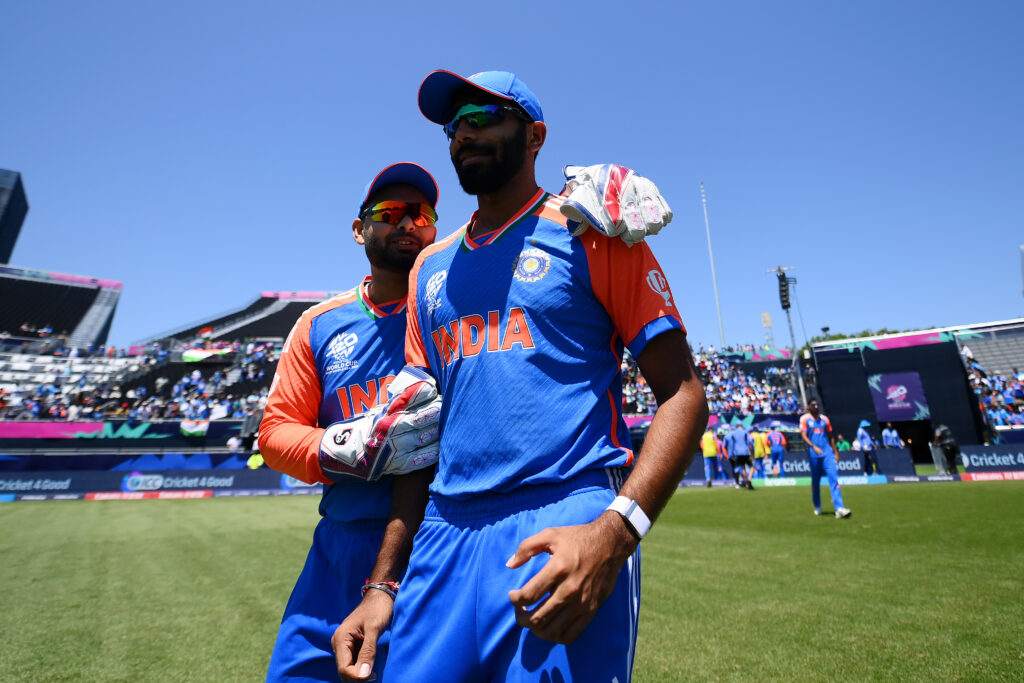
India sprang a surprise by opening with Sanju Samson, alongside Rohit Sharma, in the warm-up against Bangladesh. Instantly, it threw up much scope for interpretation. Virat Kohli was not playing the match, still recovering from jetlag. But Yashasvi Jaiswal’s omission raised a few eyebrows.
Just one warm-up game ahead of an ICC event is not ideal. But the schedule is tight. In fact, India would be playing their first match – against Ireland on June 5 – at the T20 World Cup less than 10 days after the IPL ended. As Sanjay Bangar, former India batting coach, opined on air, Jaiswal would have played the game against Bangladesh if he were the team management’s first choice to open the innings in the tournament proper. The left-hand opener didn’t have a very successful IPL with the bat and getting a feel of the conditions in New York would have helped.
The counterpoint is that India have probably already settled on a Rohit-Jaiswal opening pair, and the team management wanted to have a look at those who don’t have a proven record at this level. That was why Rishabh Pant walked back to the dug-out moments after completing his half-century and Shivam Dube walked in. India can’t have both Dube and Hardik Pandya in the playing XI unless Ravindra Jadeja is pushed to No. 8. Dube, a tall left-hand bat, is basically a back-up option, but he should be ready if called upon.
Yashasvi Jaiswal may have fallen out of favour after a modest IPL, but @RishabhPant17 at No. 3, after an opening combo of #ViratKohli and #RohitSharma, could be the X-factor that India badly needs at the T20 World Cup.
✍️ @BoriaMajumdar #T20WorldCup https://t.co/piQSUngQFX
— RevSportz (@RevSportz) June 2, 2024
The experiment of opening with Samson didn’t work. His foot movement looked tentative and he was caught on the crease, when Shoriful Islam made one jag back off a fuller length to get an LBW decision in his favour. It was only a warm-up game, but so far, Samson has failed to bridge the gap between the IPL and international T20 cricket. He needs to convince people that he can rise to bigger challenges.
On a sluggish and at times two-paced pitch, Dube, too, struggled for timing. He tried his customary big hits against the spinners but mistimed one to give a sitter off Tanvir Islam when he was on four. The catch was dropped. Dube continued to ride his luck, as another skier fell in no-man’s land. He hit a six off Mahedi Hasan all right, but got out soon after, trying to hit another maximum.
India would be happy that their big players struck the ball well and scored runs. Pant, at No. 3, made 53 off 32 balls, hitting four fours and as many sixes. Suryakumar Yadav scored 31 off 18 balls. And Pandya looked to be in fine fettle during his 23-ball 40 not out that had four sumptuous hits over the boundary.
Pant, Surya and Pandya are the men for the big stage. They don’t allow their form in a domestic league to affect their performances in international cricket. They are different players in India colours.
It would be naive to read too much into how things transpired in a warm-up fixture. For example, in 2009, India had hammered Pakistan in a warm-up game at The Oval, winning by nine wickets. In the same World T20, MS Dhoni’s men failed to reach the knockouts, while Pakistan went on to win the tournament. As far as the current edition of the T20 World Cup is concerned, expectations around the Indian team are somehow not too high. A decade of ICC trophy drought could be a reason. Also, the side lacks freshness.
Their batting line-up looks almost a carbon copy of the one last time around, in 2022, when India suffered a rout against England in the semi-final. And the warm-up fixture didn’t give any clear indication about their batting order going ahead. Will Kohli open with Rohit at the expense of a left-right combination at the top? If Surya, Pant and Pandya come in at No. 3, 4 and 5 respectively, then who would be the team’s designated finisher? Sanju could be an option at No. 3. But can he be entrusted with that responsibility at this level, in high-pressure games? Some questions are still unanswered.
As regards the Nassau County International Cricket Stadium, if morning shows the day, it is unlikely to produce high-scoring games. The pitch that was used for the India-Bangladesh fixture wasn’t conducive to stroke-play. The outfield was slow, with puffs of sand coming out. In fact, outfield-wise, it resembled Sharjah during the venue’s early days.
Rishabh Pant’s 32-ball 53 at No. 3, studded with four sixes, was the batting highlight, while Arshdeep Singh took wickets in his opening two overs, as India warmed up for the T20 World Cup with an emphatic 60-run win against Bangladesh.#INDvsBAN @BCCI https://t.co/uFwTXDFSIa
— RevSportz (@RevSportz) June 1, 2024



